Pes planovalgus, or flatfoot deformity, is the most common foot deformity that can be difficult to define. The flat foot usually refers to a foot with a decreased medical longitudinal arch, but it is actually a three-dimensional deformity with hindfoot valgus, forefoot abduction, and supination.
1234) There are diverse causes of flatfoot. Rigid flatfoot such as tarsal fusion, vertical talus, and pes planovalgus caused by neuromuscular disorders such as cerebral palsy can cause symptoms such as pain or gait disability. On the other hand, most cases of flexible flatfoot (FFF) do not cause symptoms, especially in children. However, pes planovalgus with short tendo-Achilles and hyper-mobile flatfoot are known to cause pain or other symptoms with increased activities and body weights.
5678) These symptoms become more obvious after the age of 10 years and may last into adulthood.
910)
DISCUSSION
The ankle joints are a type of second-class lever. During the push-off at the third rocker, the entire foot becomes a lever (L) and lifts the body weight (R, resistance). Herein, the metatarsal heads become a fulcrum (P) and the Achilles tendon provides the effort (E). For the lever system to operate effectively, a lever should be solid rather than flexible and have an appropriate distance (d) between the fulcrum (P) and the effort (E). In addition, it should produce an appropriate amount of force through muscle contraction.
In symptomatic pes planovalgus deformity, the lever arm is shortened due to forefoot abduction and heel valgus, and the hardness of the lever decreases and becomes flexible due to midfoot breakage.
124) It is necessary to generate a certain moment size for the gait in the ankle joint that corresponds to the second-class lever. If the length of a lever is shortened due to foot deformity, then it becomes imperative for muscles to generate an even stronger force (Fe, effort).
Many researchers have reported that pes planovalgus in children is a positive foot deformity found in the process of normal development; thus, it should not cause symptoms and eventually improve by itself. However, pes planovalgus is a type of lever disability from the perspective of kinetics; thus, it could elicit symptoms with greater weight (increase in R) or muscle fatigue after a long-distance gait (decrease in E).
316171819) In fact, several researchers have recently reported that patients with pes planovalgus could have a variety of symptoms due to the reduction of energy efficiency caused by kinetic loss during exercise including gait.
716) In many clinical cases, youths with pes planovalgus complain of abnormal discomfort or pain in the foot-ankle complex, lower leg, or knee joint. Such clinical symptoms include instability of the foot-ankle joint complex, sprains, plantar fasciitis, Achilles tendinitis, and patellofemoral joint pain.
316171819) Thus, evaluation of functional loss due to kinetic energy loss would be equally important to morphological indicators in the assessment of patients with pes planovalgus. Nonetheless, there have been few studies on the biomechanical evaluation of pes planovalgus using gait analysis.
Moment is determined (torque [moment] = force × moment arm [d] = force × lever arm [L] × cosθ) in accordance with the amount of operated force, length of lever, and angle at which force was exerted. When the value of θ is 0° (cos0 = 1), as in a normal foot, moment has the maximum value. One reason why pes planovalgus is kinetically disadvantageous is that θ deviates from 0° and ultimately shortens the lever arm compared with the normal foot. This result is caused by pes planovalgus deformity that includes forefoot abduction in the transverse plane, hindfoot valgus in the coronal plane, and midfoot breakage in the sagittal plane.
42021)
In children with the symptoms of pes planovalgus in this study, the forefoot was largely abducted (θ value in the transverse plane) compared with the control group, as the average foot AP talonavicular angle was 28.1°. The amount of heel valgus (θ value in the coronal plane) in the patient group was 17° during the stance phase (
Fig. 3D), indicating that the valgus deviation of the heel (the θ value) shortened the lever length in the coronal plane. This finding reflects hindfoot valgus, a characteristic feature of pes planovalgus deformity that shortens the length of the lever in the coronal plane.
The second reason why pes planovalgus is kinetically disadvantageous is that the lever becomes more flexible due to the midfoot breakage of the medial longitudinal arch in the sagittal plane. The foot provides a flexible board that can be stably adapted to the ground during the initial stance phase during gait and is converted to a solid lever during the push-off phase to push off from the ground properly. The energy produced by the muscles can be used efficiently only when the lever (foot) becomes solid during the push-off phase.
22)
In the sagittal plane, the Meary's angle (lateral talofirst metatarsal angle) was increased by 12.0° on average, reflecting the degree of static midfoot breakage during the stance phase. The degree of kinetic loss due to the lever becoming flexible during the gait is difficult to measure with gait analysis.
41323) The degree of maximum foot dorsiflexion (at the end of the second rocker) for the patient group during gait in this study was approximately 6.5°, with no statistically significant reduction compared to the control group. The maximum degree of plantar flexion (at the end of the third rocker) was significantly reduced (
p < 0.05). It was expected that in many of the patients the maximum foot dorsiflexion would be reduced due to the tethering of the Achilles tendon, and the amount of plantar flexion would not be affected by flatfoot deformity. However, the kinematic results were the opposite of this hypothesis.
Gait analysis recognizes the entire foot as a solid rod, unlike the recent gait analysis programs that use multi-segment foot model.
41323) In other words, the optical tracking device and software misinterpreted the midfoot breakage during the second push-off phase of the gait as increased foot dorsiflexion in the ankle joint. Thus, the kinematic results showed plantar flexion was reduced to the extent the reduction of dorsiflexion was limited in the ankle joint. Furthermore, an insufficient amount of dorsiflexion is compensated by comparable midfoot breakage. In addition, the fact that the scope of overall plantar flexion is reduced during the third rocker represents a decrease in acceleration.
Among children with pes planovalgus in this study, hindfoot valgus and forefoot abduction (talonavicular angle) both increased. Thus, the energy required for supination and inversion to make the foot a solid lever during gait should have been greater. The center line of pressure load during the mid-stance phase is biased outwardly in pes planovalgus, thereby making it difficult for a dynamic pronation–supination transition and reducing the driving force at the end of the stance phase by the abducted–supinated forefoot.
The third reason why pes planovalgus is kinetically disadvantageous is that the reduced Achilles tendon extension cannot generate normal acceleration during push-off. In a study on the joint segmental model, Saraswat et al.
24) pointed out that the ankle joint would undergo relative plantar flexion and extroversion since the pitch of the calcaneus in pes planovalgus was shortened and became valgus from a kinematic perspective. The overall ankle joint motion range would also be shortened since the ankle joint would be in a relative state of planar flexion during gait when accompanied by a tight Achilles tendon. Therefore, when the ankle joint motion range, particularly ankle dorsiflexion, is reduced, motion of the adjacent joints such as the knee joint and foot complex will be increased to compensate, in order for the lower leg to move forward from the rear of the ankle joint to the front in the midstance phase. In the knee joint, the plantar flexion-knee extension couple will be increased; therefore, the knee joint will be hyperextended.
22) In the foot, the midfoot, which is normally fixed during midstance, becomes mobile, thereby causing midfoot collapse upon weight loading (midfoot breakage of flexible flatfoot). On the contrary, to increase ankle joint dorsiflexion by another compensatory mechanism, it is also possible to walk while slightly bending the knee joint to reduce gastrocnemius tension. The pes planovalgus patient group in this study did not show an increased plantar flexion-knee extension couple. Instead, it demonstrated a gait style that would bend the knee joint slightly with midfoot breakage. But the compensation mechanism might be different according to the gait speed.
When the overall ankle joint motion range and foot lever arm rigidity are reduced, plantar flexion moment is reduced, joint angular velocity is reduced, and ultimately the power of the ankle joint will be decreased. As the Achilles tendon is not appropriately stretched during growth in children with severe pes planovalgus deformity, Achilles tendon lengthening is affected, which is believed to cause a shortening of the Achilles tendon.
In this study, the calcaneus pitch angle of the symptomatic flatfoot group was reduced (11.6° on average) compared with the normal group. The Meary's angle was increased (12.0° on average). These observations indicate that the hindfoot is relatively plantar flexed, and the midfoot has more mobility during stance phase.
Consequently, in this study, the ankle joint moment (0.89 Nm/kg vs. 1.27 Nm/kg) and power (1.38 Nm/kg vs. 2.52 Nm/kg) were significantly lower for the patient group at the last part of the second rocker. Ultimately, pes planovalgus is a complex, multi-joint, multi-plane deformity involving an unfavorable leverage system. To compensate for this insufficient biomechanical skeletal structure, subsidiary abnormal muscle activity might occur, which can cause various muscle fatigue symptoms around foot-ankle complexes.
This study has some limitations. Young adults whose mean age was 21.3 years were selected as the control group, while children with pes planovalgus had a mean age of 9.5 years. For the kinetic study, it was challenging to constitute an age-matched group with normal rigid arched feet. Nonetheless, this study can still be helpful in determining effective and accurate therapeutic methods by conducting an evaluation of kinetic severity using gait analysis in addition to the diagnosis of pes planovalgus using existing methods such as X-ray and footprint.
In conclusion, this study measured the degree of kinetic loss during gait among patients with pes planovalgus by comparing gait analysis data with unaffected controls. From a kinetic perspective, patients with severe pes planovalgus were found to have an approximately 30% loss of moment and 45% loss of power compared to individuals with feet preserving medical longitudinal arches.
Go to :

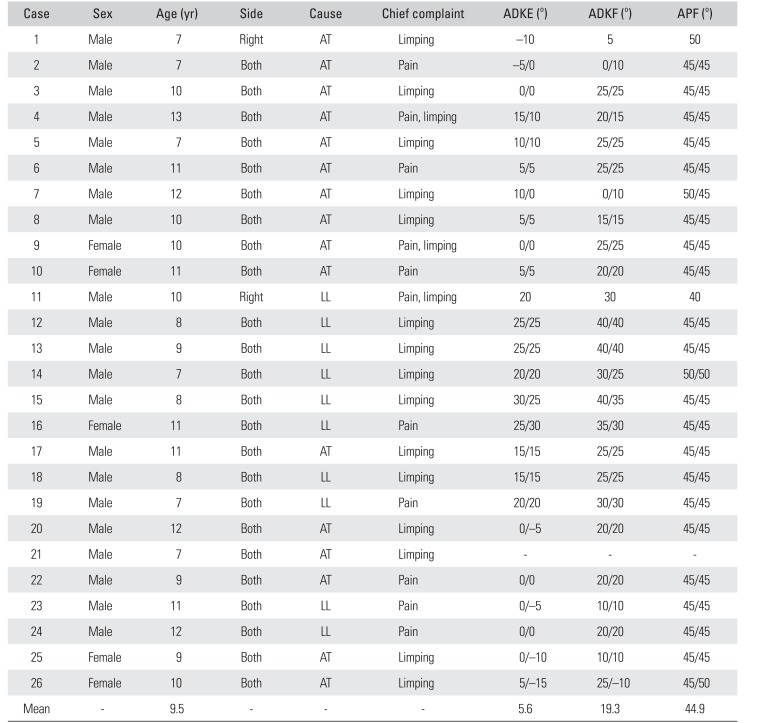
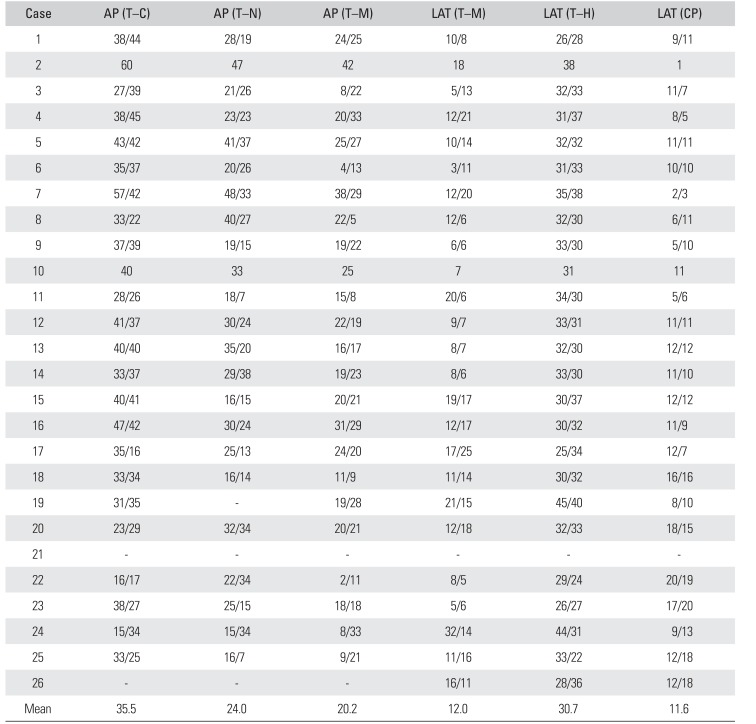
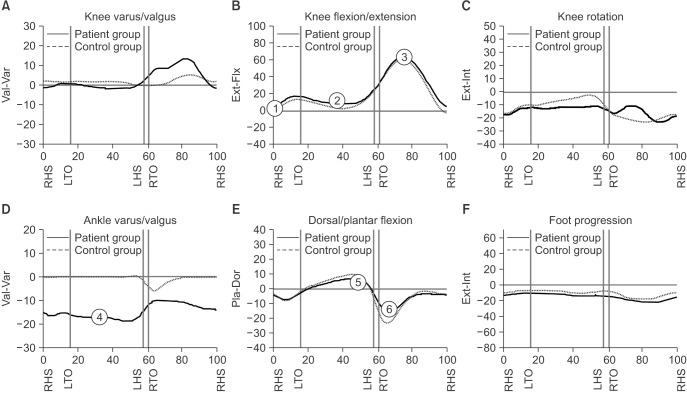
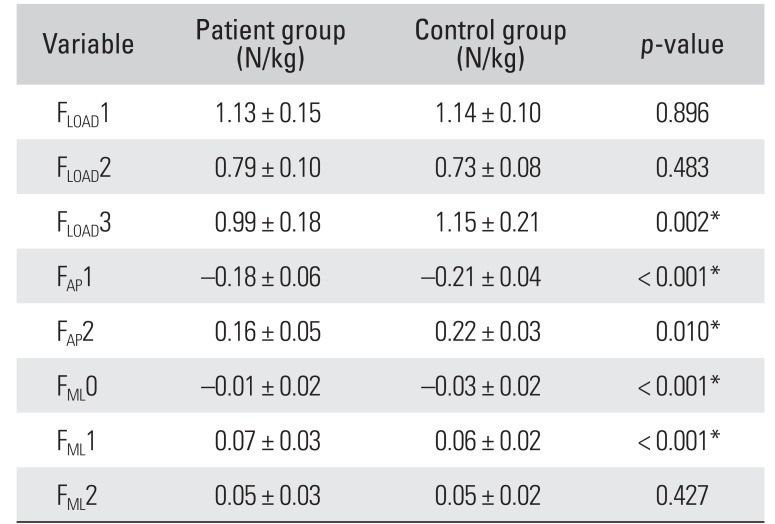
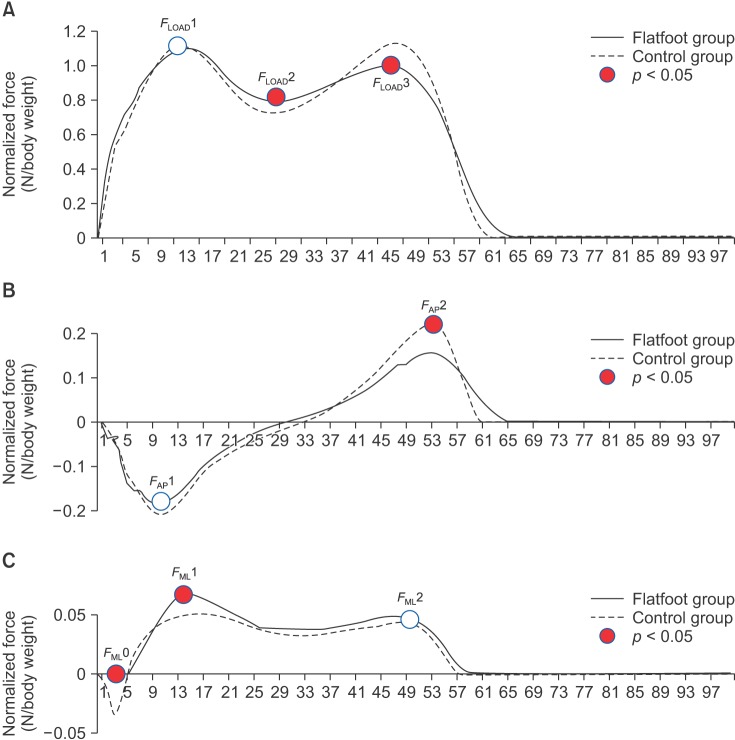
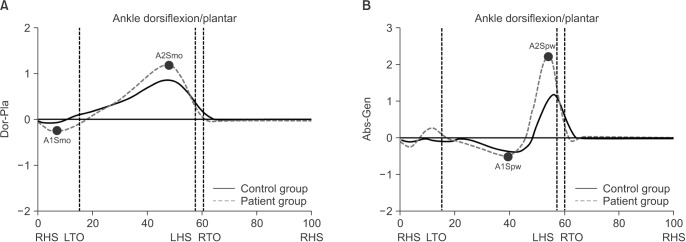
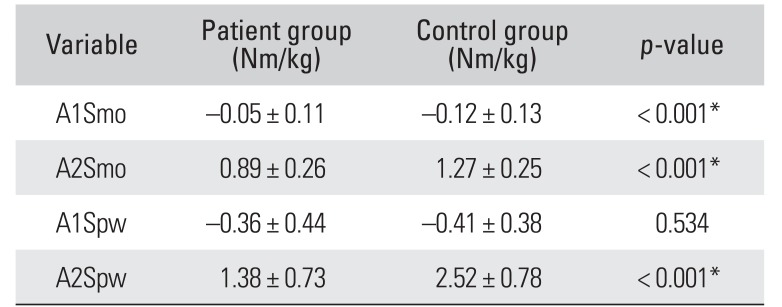




 PDF
PDF ePub
ePub Citation
Citation Print
Print



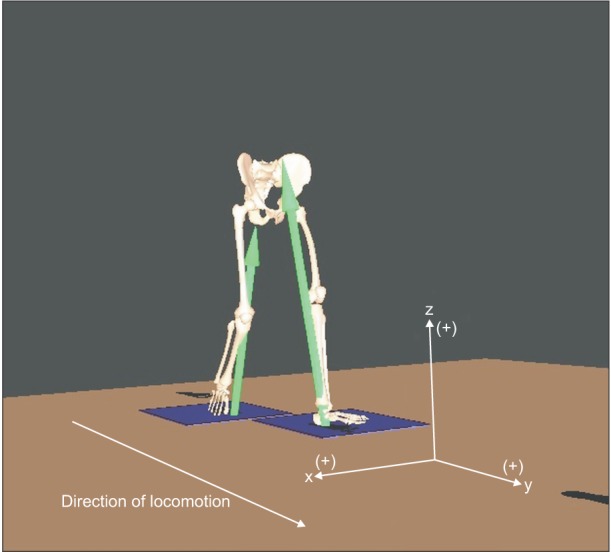
 XML Download
XML Download